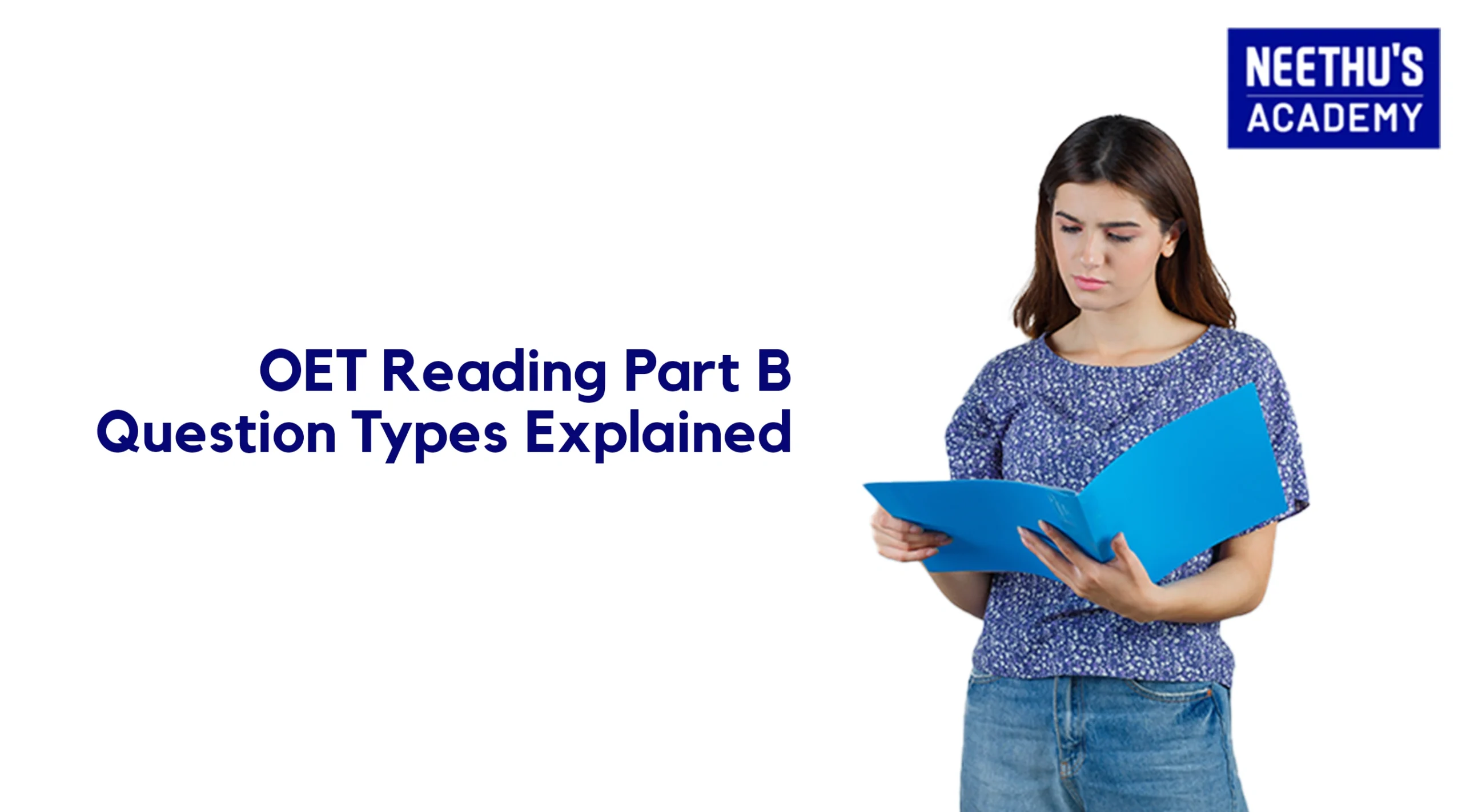
The OET Reading section assesses whether or not a candidate can comprehend and evaluate healthcare-related texts. This is why OET Reading Part…

When preparing for the Occupational English Test (OET), many doctors find Reading Part A particularly challenging. The reason? It demands speed, precision, and clarity under limited time conditions. If you’re a medical professional planning to work or study abroad, acing this section is vital.
For doctors, clear and precise reading of clinical reports is not only necessary for exams, but for daily practice as well. That’s why OET Reading Part A is structured in such a way that it reflects actual situations where you have to apply important information in a matter of seconds.
This blog is going to take you through the top strategies, reading habits, and time management tips that you require to excel.
Let’s start by dissecting Reading Part A of the OET.
✅ What to Expect:
The texts may comprise patient information leaflets, referral letters, medication guidelines, or procedural notes. The questions are classified into:
Matching (Questions 1–7)
Sentence Completion (Questions 8–14)
Short Answer (Questions 15–20)
This section is different from the rest of the OET test; it doesn’t examine deep interpretation, instead it examines how well you can find information.
To do well in OET Reading Part A, you have to become proficient in two skills: skimming and scanning.
This means reading over the material quickly to get the main idea of the content.
In this case, you need to search for certain bits of information, like:
Repeating these skills with OET reading practice materials improves your accuracy as well as speed.
Scan the four texts within the first 1.5 to 2 minutes to get an understanding of what each piece of information is. This makes it easy to navigate while responding to questions.
These are simple and are good for boosting confidence. These questions require you to match a statement or information against one of the four texts (A, B, C, or D).
Before you look for the answers, underline or mentally highlight key words in the question. They serve as anchors when you scan the text.
Remember always—Part A is not for measuring your capacity to think deeply about the content. Your task is to find the right information, not infer it. So, just stay with the facts given.
OET questions tend to paraphrase the source text. Develop awareness of synonyms and medical vocabulary in order to fit question wording with content appropriately.
Time management is a lifesaver in Part A. You have less than 1 minute per question, so you need to be swift and sure.
Here’s how you spend your time:
To become better, practice timed mock tests regularly. Treat these as simulations of the real exam.
At Neethu’s Academy, one of Kerala’s top OET training institutions, students take these mock tests under actual test conditions on a regular basis. The idea is not to simply practice, but to develop the skill to think and answer in pressure situations.
Doctors have an advantage of having experience with clinical reports. However, exam-style practice is still necessary.
Here’s how you can tailor your OET reading practice:
Practice with:
Get accustomed to the way information is usually structured in such texts. The more familiar you are, the faster you’ll locate what you’re looking for. Also, ensure to use updated OET Reading Part A practice test materials.
Self-practice is powerful—but the right guidance, adds speed, responsibility, and expert tips. If you’re in Kerala, you’re fortunate to have some of the best OET coaching centres such as Neethu’s Academy at your reach
What makes us special:
At Neethu’s Academy, students are provided with focused coaching tailored for doctors, enabling them to practice their skills in weak areas and develop speed and confidence.
If you want to pass the OET, particularly in one sitting, good coaching can be the difference between success and failure.
You are prepared. You’ve done your practice. But on exam day, you can still become anxious. Use these tips to remain calm and give it your all.
OET doctor Reading Part A is certainly tough, but with the right attitude, resources, and strategy, you can overcome it easily. Concentrate on developing your reading skills, timing yourself, and practicing actively.
Whether you are self-studying or studying at an OET coaching centre, ensure that you are making consistent efforts and progress.
When you’ve got this section down, you’re not just passing an exam—you’re demonstrating your capacity to operate efficiently in high-pressure, real-world medical environments. So begin today and develop the skills that will be used throughout your career in medicine.
A: Practice skimming and scanning on a daily basis, and utilize previous paper simulations under timed conditions.
A: Listen to medical audios every day and practice identifying key facts with sample test recordings.
A: Don’t take more than 2 minutes reading all the texts and 30–40 seconds per question.
A: You have exactly 15 minutes to finish Reading Part A.

The OET Reading section assesses whether or not a candidate can comprehend and evaluate healthcare-related texts. This is why OET Reading Part…



WhatsApp us